SaaS Product Development Process: All You Need to Know
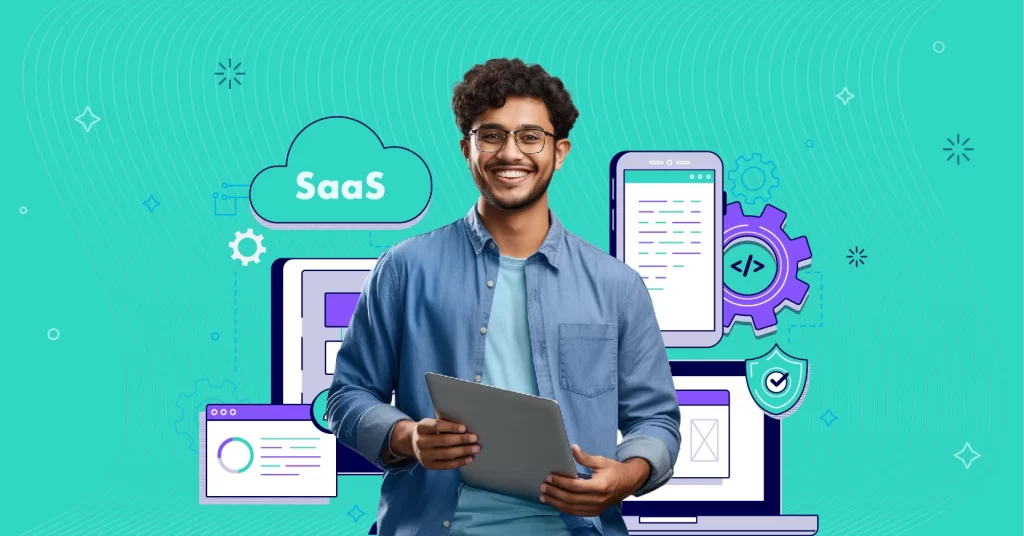
The rapid growth of software-as-a-service (SaaS) products in the last decade has been a big game-changer in the tech world. There are so many of them out there — Google Suite, Slack, Zoom, Microsoft Teams, Hubspot, Zoho Mail, Freshdesk, Mailchimp, etc. And there is a high chance that you would’ve come into contact with at least one of these apps in the last 24 hours.
In fact, according to SaaS Academy, 80% of all businesses and enterprises use at least one SaaS product in their day-to-day operations, and 88% of them use cloud-based services (something as simple as Google Docs) in one form or another. You may take this as a ripe opportunity to build your own SaaS product and expand your SaaS offerings.
However, this is just one side of the story.
Data says 9 out of 10 SaaS products are either failing to make an impact or destined to fail due to poor product adoption, poor scalability, lack of funding, and lack of a unique value proposition.
Developing, marketing, and, more importantly, successfully running a SaaS product development comes with its own share of challenges, without a doubt.
So, let’s understand the SaaS product development process — what should you do to build a thriving SaaS product in the next few minutes?
Table of Contents
What is SaaS Product Development?
SaaS product development means creating web-based applications that are typically hosted and maintained on the cloud. Users can access and use the software over the internet without installing the same on their local devices.
Developing a SaaS product includes giving continuous updates, scalability, and subscription-based billing. Take Gmail/Zoho Mail, for example.
Zoho Mail is an online email service designed for businesses. It provides secure email hosting and is integrated with calendars, contacts, and tasks, and it can be accessed from anywhere, provided you have an internet connection.
Zoho Mail offers its users a seamless, maintenance-free user experience with regular updates, security patches, and enhancements.
SaaS Product Development Lifecycle: 9 Step Process
Creating a successful SaaS product requires a blend of analytical thinking and problem-solving abilities, as well as innovative yet practical solutions. It involves idea generation followed by flawless execution of those ideas. Now you are going to see the SaaS development process.
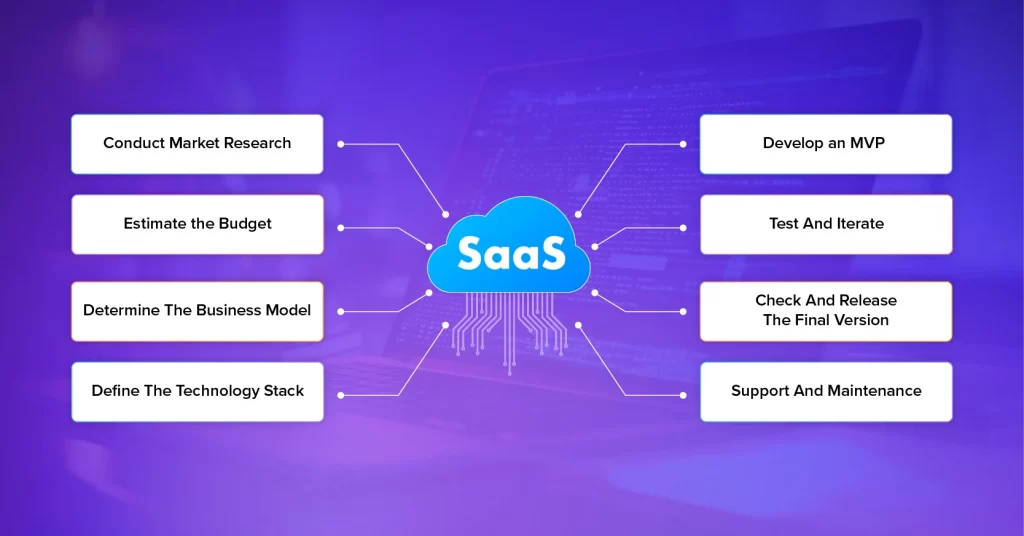
Sounds too vague.
Let’s understand step-by-step how the SaaS product development process works.
Stage 1: Conduct Market Research
Market research is very important in SaaS product development. You’re supposed to systematically gather, analyze, and interpret information about a market.
Try to find your target audience, potential customers, and competitors. Identify the market needs, market size, and competition to define your product’s unique value proposition. You can follow techniques like surveys, interviews, SEO tools, and competitor analysis to achieve this.
So, how does it help?
Effective market research informs about product positioning, feature prioritization, and strategic planning. This way, you can ensure your product meets actual market demands and has a competitive edge.
Market research is the cornerstone to running a successful SaaS-based product in the future. It helps you understand user pain points, preferences, and behavior, allowing you to tailor your SaaS offering to market gaps and customer needs.
Stage 2: Gather Basic SaaS Product Requirements
The next step is to gather the basic SaaS requirements. In this phase, developers and stakeholders outline the product’s functional and non-functional requirements.
It typically includes defining the core features of your SaaS product, user roles, data security standards, compliance needs, scalability, reliability, and user experience goals.
Over here, techniques like user stories, use cases, and requirement workshops are employed. Make sure that all the stakeholders have a shared understanding of the product vision and its objectives. It lays a strong foundation for designing and developing a SaaS solution that meets user expectations and business goals.
Stage 3: Prepared a Detailed Budget Estimate
It includes calculating the cost required to bring the product from concept to market. A well-defined SaaS marketing budget is essential to ensure product visibility and traction post-launch. It usually provides research, design, development, marketing, and operational expenses. It accounts for team salaries, technology and infrastructure costs, third-party services, and contingency funds.
This process requires you to thoroughly analyze the project scope, resource allocation, and timeline projections. Some SaaS businesses tend to either overlook or skip this step altogether. But don’t do it.
After all, a well-estimated budget helps you secure funding from VCs, plan and allocate resources better, manage risk, and ensure that the SaaS product you developed is financially viable. It’s crucial to align project expectations with financial constraints and investment capabilities.
Stage 4: Narrow Down On Your Business Model
Narrowing down on a fixed business model for a SaaS product involves defining how the product will generate revenue and deliver value to your customers.
Common SaaS business models include subscription-based (monthly or yearly fees), freemium (basic services for free with premium features for a fee), and usage-based pricing (charges based on consumption).
The business model you decide impacts your product design, marketing strategies, and customer engagement. In fact, a well-chosen business model aligns with customer value propositions, competitive differentiation, and market demands. It has a direct impact on the long-term sustainability and profitability of the SaaS product.
Stage 5: Define Your SaaS Product’s Technology Stack
The technology stack is like the backbone of your SaaS product. Defining the technology stack means selecting programming languages, frameworks, databases, and server infrastructure that go into building and deploying the SaaS product. This choice of it depends on the product’s requirements, scalability, security, and team expertise.
Common stacks include LAMP (Linux, Apache, MySQL, PHP/Python/Perl) for back-end flexibility and MEAN (MongoDB, Express.js, AngularJS, Node.js) for JavaScript-centric development in the front end. Choosing the right stack ensures efficient development, ease of maintenance, and scalability.
It will be a strategic decision that affects development speed, future-proofing, and the ability to integrate with other services and technologies.
Stage 6: Develop an MVP
MVP stands for a minimum viable product. It is a strategy in the SaaS product development process where the product is built with the minimum set of features needed to satisfy early adopters and validate the product concept in the real market.
Over here, the focus is on building the product’s core functionality that solves the primary problem for users, omitting secondary features. It allows SaaS developers to collect early feedback and iterate quickly, reducing time and cost.
The MVP phase holds immense importance for testing hypotheses about market needs and product usability. It guides further development based on actual user data (and not assumptions) and feedback.
Stage 7: Test And Iterate Your SaaS Product
Testing and iterating are processes that are always almost ongoing in SaaS product development. The product is rigorously evaluated by various testing methods (unit testing, cross-browser testing, integration testing, and user acceptance testing) to ensure functionality, security, and usability.
Cross-browser testing, for example, is essential to confirm that the product performs well across different web browsers. This testing can be conducted manually or by using automation tools. The use of automation tools for cross-browser testing is efficient and helps in quickly identifying and resolving compatibility issues, thereby enhancing the user experience across various platforms.
Feedback from real users is collected to identify pain points and areas for improvement. And based on this feedback, the product undergoes continuous iterations. Each product feature is added, modified, or removed to meet user needs better.
This iterative cycle helps improve product quality and user satisfaction and ensures that your product is a market fit. This way, your product can adapt to changing market demands and technological advancements.
Stage 8: Check and Release the Final Version
The final version of the SaaS product is checked and released once all the tests are done, and changes are made. This will ensure the product meets all predefined requirements and quality standards. It typically involves final security audits, performance testing, and usability checks. Once confirmed, the product is deployed to the production environment and made available to the end users.
This is the phase that marks the transition from development to market launch. So, it requires careful planning and execution to ensure a smooth rollout.
Besides, post-launch monitoring is essential to address any immediate issues and gather initial user feedback.
Stage 9: Support and Maintenance
Support and maintenance in SaaS development are critical to ensure ongoing operational stability, security, and user satisfaction. In this stage, the SaaS software development companies provides user support through help desks or chatbots, fixing bugs, updating documentation, and rolling out regular updates and new features.
Continuous monitoring of system performance and user feedback helps to prioritize maintenance tasks and feature enhancements. Effective support and maintenance invariably result in improved customer loyalty. In extension, they encourage long-term subscriptions and ensure the product remains competitive and compliant with evolving demands.
Why Choose CONTUS Tech as your SaaS Product Development?
Developing a SaaS product is inherently complex for beginners. It is because a SaaS product needs more than just resources and a team — it requires scalable, secure architecture, continuous updates, integration with other services, compliance with regulations, and so on. Managing these aspects needs high-level expertise in cloud computing, cybersecurity, and software engineering.
Fortunately, assembling an in-house team from scratch isn’t your only option. A SaaS product development company like CONTUS Tech brings years of knowledge, expertise, and experience to the table. We have over 15+ of experience in developing 100+ successful SaaS products like MYn, NETVERSE, Practyce, BigFan and Skempi.
Our clientele is spread across 5 continents, 10 different time zones, and 40+ countries across the world. We provide expertise in designing scalable SaaS products, ensuring data security, integrating with third-party services, and maintaining regulatory compliance.
We have a dedicated team of 300+ professionals — experienced project managers, seasoned product engineers, insightful business analysts, and meticulous QA specialists, among others.
We offer full-tailored SaaS solutions and crystal-clear MVP estimations and ensure 100% on-time deployments to all our clients. Besides, we also outsource our teams in case you need dedicated SaaS product developers to augment your in-house teams.
Talk To Our Team, Brief Your Requirements For SaaS Product Development, And Get Started In The Next Few Days. Contact Us Today to Develop a High-performing SaaS product.
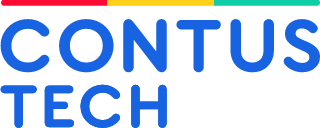

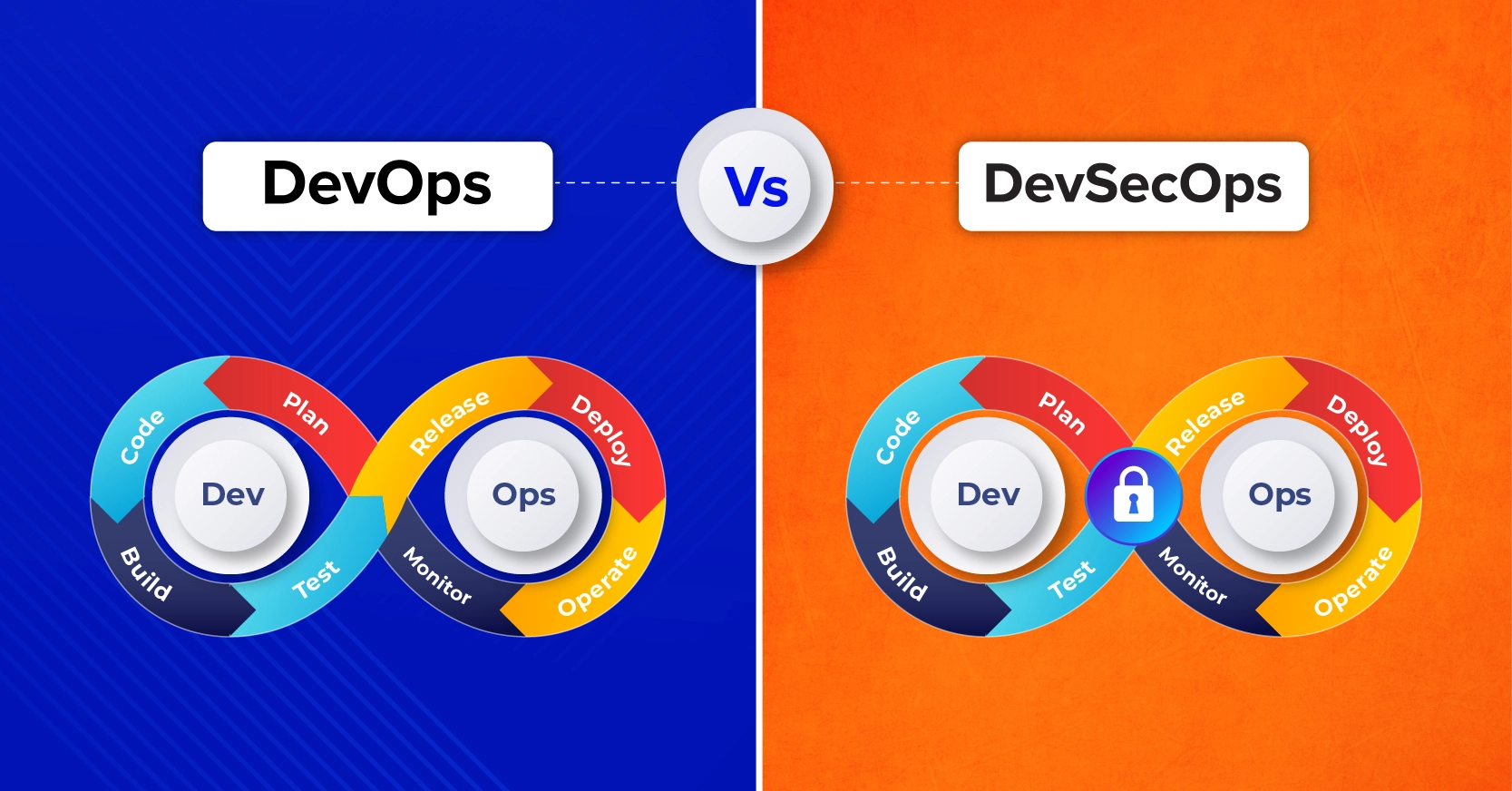
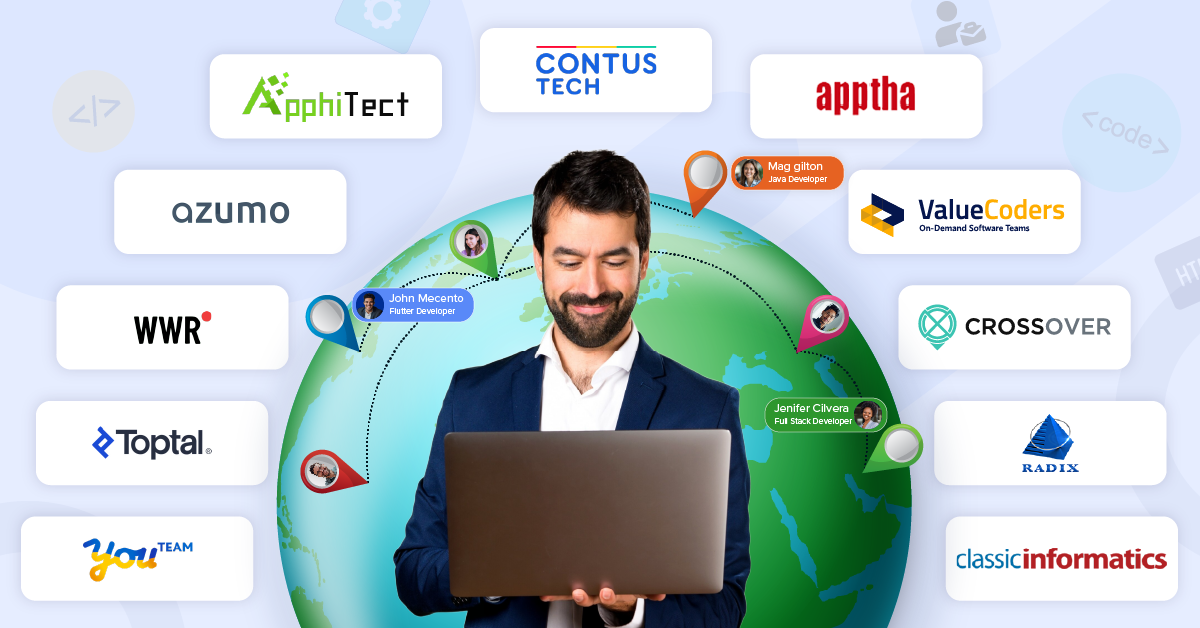
As someone just getting into SaaS development, this guide is invaluable. The section on MVP development was particularly helpful in understanding how to start small and scale up.
I found the part about integrating third-party APIs very insightful. It’s a good reminder that building partnerships can significantly enhance your SaaS product’s functionality.
I found the information on cloud infrastructure options very helpful. Choosing the right provider can have a big impact on your product’s performance and cost.
This post really clarifies the importance of hiring specialized SaaS developers. It’s not just about coding skills but also understanding the SaaS business model.
User feedback is so crucial in SaaS development, and I’m glad you highlighted it. Listening to users helps in refining the product and adding value.
Fantastic article on SaaS product development! The detailed steps and best practices you outlined are incredibly helpful. As someone new to the SaaS industry, I feel much more confident about starting my project.
Excellent points! Investing in robust cloud infrastructure and continuous updates are definitely essential for SaaS success. Thanks for providing such a comprehensive guide on what makes SaaS development effective.
Understanding the SaaS product development process is crucial for startups. Your detailed explanation of each phase from ideation to launch is very helpful. Thanks for the insights!
This step-by-step guide on the SaaS product development process is incredibly informative! Understanding each phase, from ideation to deployment, helps demystify the process. Thanks for breaking it down so clearly.
This article is avery helpful for our SaaS development team members! The provided detailed breakdown of the development process of SaaS is really helps us to improve our work flow.
SaaS products are constantly evolving. How can companies ensure that their products stay ahead of the curve and meet the changing needs of their customers?
I’m curious to know more about the marketing strategies that are most effective for SaaS development products. How can companies reach their target users and generate interest in their products?
The blog mentions the importance of having a core team in place for SaaS product development. Could you please explain more on the specific skills and experience that are needed for a most successful SaaS product development team?
It would be great if you can explain more on the role of user testing the SaaS product development process. How can companies ensure that their SaaS products are meeting the needs of their target audience?
I would like to see more on the specific challenges of SaaS product development. Perhaps you can discuss some of the important pitfalls that companies face and how to avoid them.
SaaS products are constantly booming. How can companies ensure that their SaaS products stay ahead of the curve and meet the necessary needs of their customers? I hope this helps to your audience!
I found the section on defining your business model to be very helpful. It is very important to have a clear understanding of how you will generate revenue from your SaaS product development by following this process.
The blog shows the importance of understanding your audience and their basic needs. This is essential for developing a successful SaaS product.
This is a perfect blog that provides a clear and concise guide of the SaaS product development process. I especially appreciate the emphasis on market research and iterative development.
As someone relatively new to SaaS product development, this blog was incredibly useful. I like how it breaks down the process into easy steps and provides actionable advice along the way. It’s clear that a lot of thought and expertise went into crafting this guide. I’ll definitely be referring back to it frequently as we continue our journey in develop a our SaaS product.
I Really Impressed with the content, I appreciate the emphasis on market research and understanding the target audience for SaaS development.
Wow!!! this article couldn’t have come at a better time to us. We’re in the middle set of developing our own SaaS product, and the we saw this guide has provided us with a clear road rout to follow.
We’ve already started implementing some suggestions give by you in this article, like prioritising features based on user review, and we’re seeing positive results. Kudos to writer for sharing such valuable points!